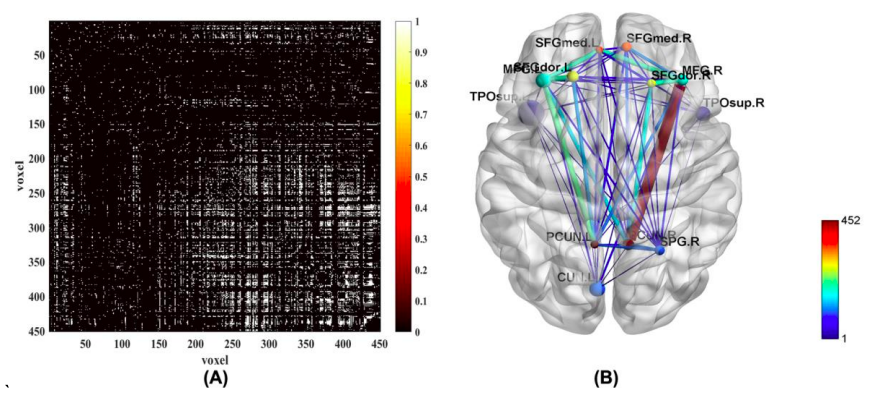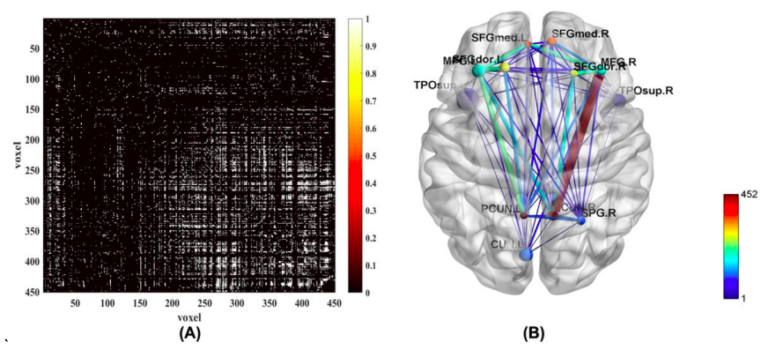
Alzheimer’s disease (AD) is a common neurodegenerative disease occurring in the elderly population. The effective and accurate classification of AD symptoms by using functional magnetic resonance imaging (fMRI) has a great significance for the clinical diagnosis and prediction of AD patients. Methods: Therefore, this paper proposes a new method for identifying AD patients fromhealthy subjects by using functional connectivities (FCs) between the activity voxels in the brain based on fMRI data analysis. Firstly, independent component analysis is used to detect the activity voxels in the fMRI signals of AD patients and healthy subjects; Secondly, the FCs between the common activity voxels of the two groups are calculated, and then the FCs with significant differences are further identified by statistical analysis between them; Finally, the classification of AD patients fromhealthy subjects is realized by using FCs with significant differences as the feature samples in support vector machine. Results: The results show that the proposed identification method can obtain higher classification accuracy, and the FCs between activity voxels within prefrontal lobe as well as those between prefrontal and parietal lobes play an important role in the prediction of AD patients. Furthermore, we also find that more brain regions and much more voxels in some regions are activity in AD group compared with health control group. Conclusion: It has a great potential value for the AD pathogenesis mechanism study.

